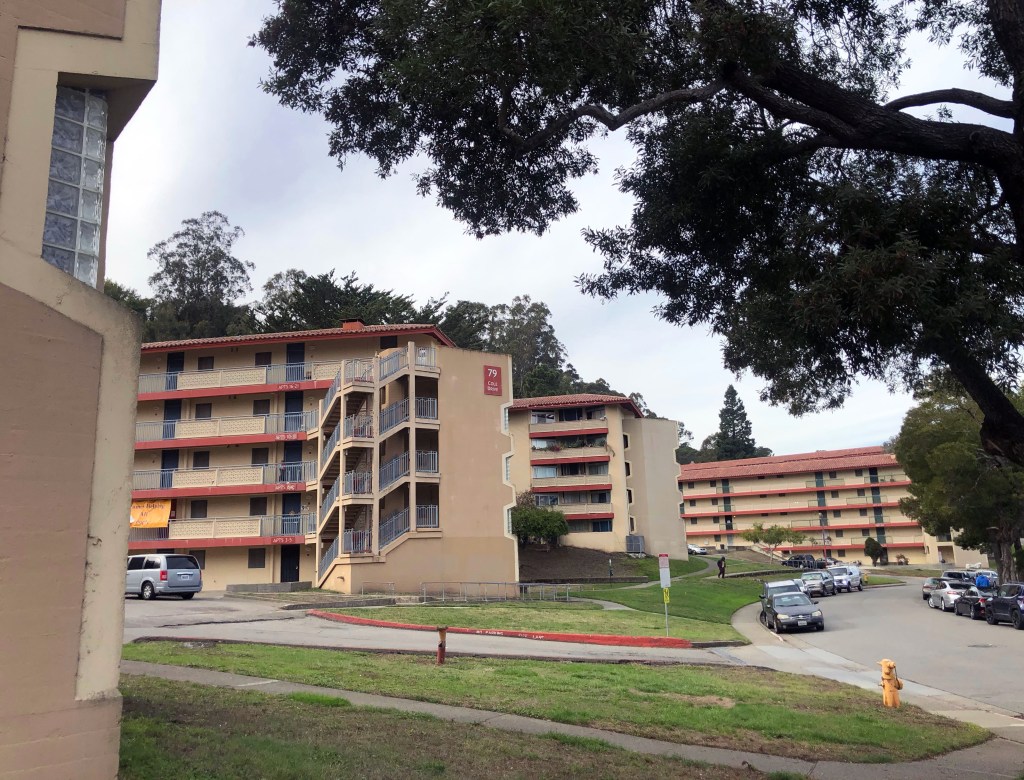Marin supervisors have approved the issuance of up to $50 million in tax-exempt bonds to help finance the first phase of the rehabilitation of Golden Gate Village in Marin City.
“This really is a watershed moment,” said Supervisor Stephanie Moulton-Peters, whose district includes Marin City. “It’s another step in the process.”
The public housing project provides low-income housing to more than 700 residents in eight high-rise and 20 low-rise buildings. Designed in 1957 by a protege of Frank Lloyd Wright and built in 1961, the buildings are badly in need of repair because of age and a lack of maintenance stemming from inadequate federal funding over the years.
The supervisors were asked on Tuesday to approve the issuance of the bonds by the California Municipal Finance Authority, a joint powers agency of some 350 California counties, cities and special districts. The authority assists local governments, nonprofits and businesses with the issuance of taxable and tax-exempt financing. Marin County is one of the authority’s members.
Federal law requires that the elected representatives in the jurisdictions where projects are located certify that the projects will constitute a public benefit. Assistant County Executive Dan Eilerman told supervisors there was no question about that.
“This project is all about affordable housing,” Eilerman said, “preserving and revitalizing historically significant buildings and keeping people in their homes safely and sustainably.”
In August, the California Tax Credit Allocation Committee reserved $76 million in low-income tax credits for the project. The tax-exempt bonds will lower the interest costs for the project while the tax credits when sold will generate equity.
Mike Andrews, a consultant that the Marin Housing Authority hired to advise it, said the rehabilitation will take place in three phases. Andrews said the tax credits and bonds approved will help underwrite the $85 million cost of phase one. The total cost for completing all three phases is estimated to be $266 million.
The plan also calls for Golden Gate Village to transition from the U.S. Department of Housing and Urban Development’s public housing program to the department’s long-term, Section 8 project-based voucher program.
The process, known in government terms as a rental assistance demonstration or RAD conversion, will result in more government funds for operations and maintenance of Golden Gate Village. It also allows for the use of private capital and more flexible funding sources, like low-income housing tax credits, to address repair needs.
Andrews said phase one will refurbish 88 residences, including one resident manager’s apartment.
“It will touch every surface inside and outside of the buildings,” he said. “The units will have new kitchens, bathrooms, new floor coverings, new paint, new fixtures and new appliances. It will be a comprehensive revitalization.”
A few members of the Golden Gate Village residents’ council, however, remain opposed to the rehabilitation.
Royce McLemore, a longtime member of the council, said it previously submitted an alternative plan, but it was “shot down” by Andrews.
The plan called for the creation of a limited equity housing co-op and the transfer of ownership of Golden Gate Village’s 30 acres of land and 29 buildings to the co-op. Residents living at Golden Gate Village were to be given the opportunity to become shareholders in the co-op. The housing authority’s commissioners decided, with the advice of Andrews, that the plan was financially infeasible.
McLemore also asserted that the housing authority had failed to secure a memorandum of understanding, known as an MOU, with the resident council concerning the revitalization.
“It’s not over until the Lord says it’s over, in Jesus’ name,” she said. “Watch and see.”
Members of a group of Marin residents who live outside Marin City but have resolutely backed the residents’ council in the past voiced their support for the issuance of the bonds.
Anne Devero-Rosenfeld of Mill Valley, a member of Friends of Golden Gate Village, said the MOU issue should be resolved, but added, “Even in light of that, Friends of Golden Gate Village supports the county approval of bonds for phase one Golden Gate Village financing.”
Barbara Bogard of Mill Valley, said, “I’ve been working on the revitalization on a strictly volunteer basis for close to 10 years now. I’m pleased to know that after several false starts, we could finally be less than four months from beginning this important project. I’m asking you to please approve these bonds, let’s get going.”
Nancy Binzen of San Geronimo Valley said, “I, like Barbara, am one of the founding members of the strategy team that worked very closely with the resident council for several years to bring safe, fair and sustainable housing that also maintains the historic value of this special place to all the people and families who live at Golden Gate Village. That this revitalization can actually happen is momentous.”

